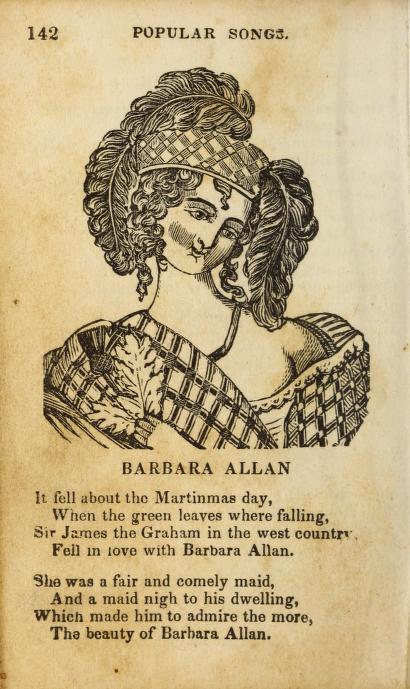Barbara Allen
We have made numerous references to musicologists who have gone out into the countryside to record folk music. Bartók and Kodály in Hungary, Kolberg in Poland, Janáček in Moravia, John and Alan Lomax in America, for example. And we’ve often noted how folk music has made its way into the “masterworks” of serious composers. But we don’t often get to the kind of performances the collectors of folk music would have heard: performances that rely entirely on oral tradition.

In the latter half of the 19th century, Francis James Child (1825-1896) collected and anthologized English folk ballads. He was a Harvard professor of literature whose primary interest lay in the texts of ballads. He worked primarily from secondary sources, and his work in turn inspired others to go into the field to find the tunes that accompanied the Child ballads. This song is cataloged as Child 84.
A folk song is a song that has entered oral tradition and been changed in some way through oral transmission. Oral transmission works kind of like the game of telephone. Small changes, or inaccuracies, accumulate with each transmission. The process can make the recounting of facts unreliable. But in music, it often tends to erase rough edges. A song can be refined in the process. But it will also likely take on certain local traits and performance styles.
Barbara Allen is probably the most popular or most performed American folk song. But its roots extend back into England and Scotland. There is an early reference to the song by Samuel Pepys in 1666. The name appears in many guises, e.g. Barbara Allan or Barbary Ellen. And you can find many variations in the narrative—different place names, times of year, and names for the dying man. But the overall narrative remains the essentially the same.



